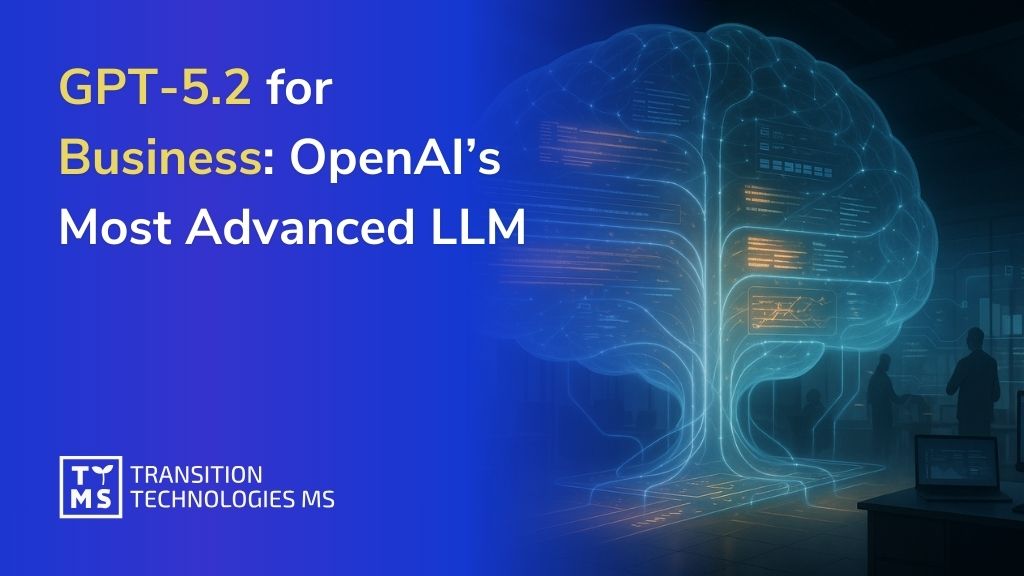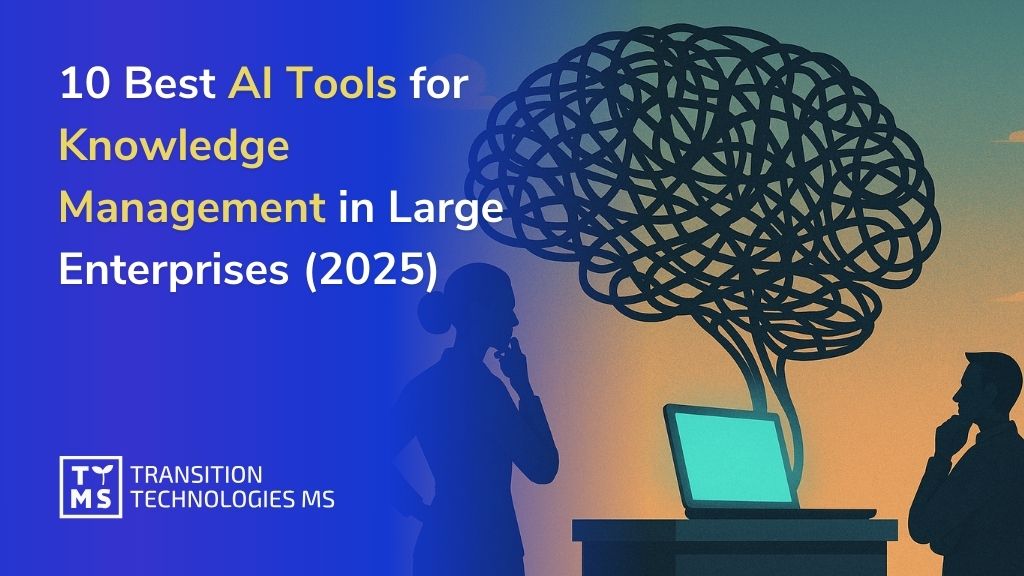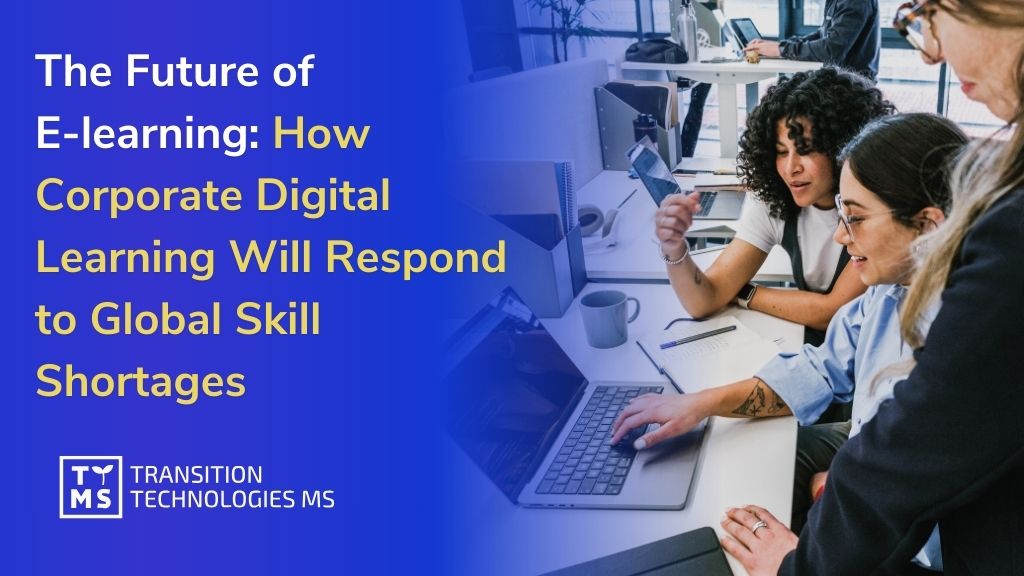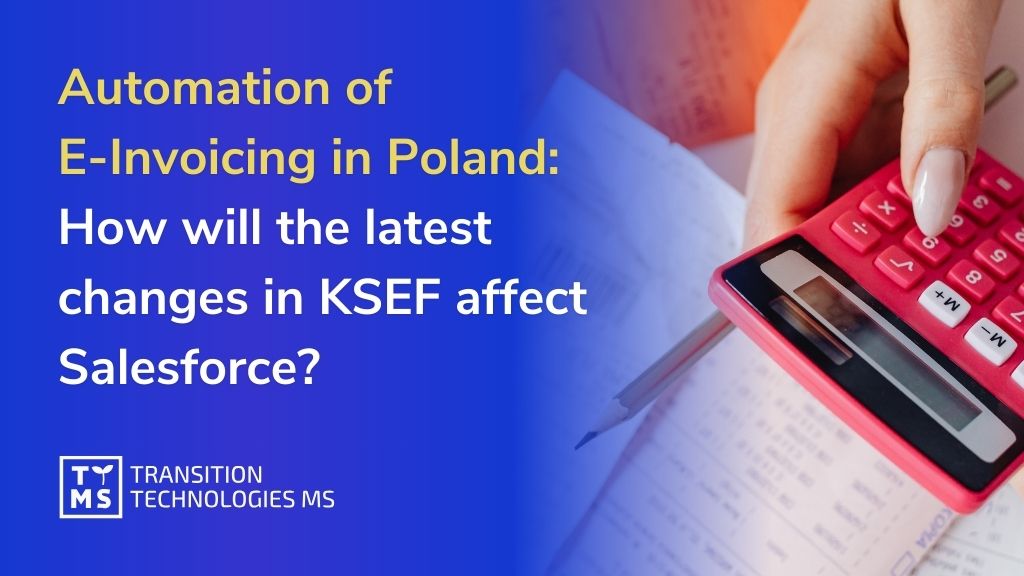1. From Assistive Copilots to Autonomous Coworkers – A Paradigm Shift
AI in the enterprise is undergoing a profound shift. In the past, “AI copilots” acted as assistive tools – smart chatbots or recommendation engines that helped humans with suggestions or single-step tasks. Today, a new breed of AI coworkers is emerging: autonomous agents that can take on complex, multi-step processes with minimal human intervention. Unlike a copilot that waits for your prompt and provides one-off help, an AI coworker can independently plan, act, and complete tasks end-to-end, reporting back when done. For example, an AI copilot in customer service might draft an email reply for an agent, whereas an AI coworker could handle the entire support request autonomously – looking up information, composing a response, and executing the solution without needing a human to micromanage each step.

This jump in capability is enabled by advances in generative AI and “agentic AI” technologies. Large language models (LLMs) augmented with tools, APIs, and memory now allow AI agents to not just recommend actions but to take actions on behalf of users. They can operate continuously, accessing databases, calling APIs, and using reasoning loops until they achieve a goal or reach a stop condition. In short, AI coworkers add agency to AI – moving from back-seat assistant to trusted digital colleague. This matters because it unlocks a new level of efficiency and scale in business operations that goes beyond what assistive copilots could offer.
2. Why AI Coworkers Matter for Enterprise Strategy
For enterprise leaders, the rise of autonomous AI coworkers is not just a tech trend – it’s a strategic opportunity. Early evidence shows that AI agents can accelerate business processes by 30-50% in many domains. They work 24/7, never take breaks, and can handle surges in workload without additional headcount. By taking over routine tasks, AI coworkers free up human employees for higher-value work, enabling leaner, more agile teams. Replit’s CEO, for instance, noted that with AI agents handling repetitive coding and support queries, their startup scaled to a $150M revenue run-rate with only 70 people – a workforce one-tenth the size that such a business might have needed a decade ago. Small teams augmented by AI can now outperform much larger organizations that rely solely on human labor.
Executives should also recognize the competitive implications. The companies investing in AI coworkers today are seeing gains in speed, cost efficiency, and innovation. According to a September 2025 industry survey, 90% of enterprises are actively adopting AI agents, and 79% expect to reach full-scale deployment of autonomous agents within three years. Gartner similarly predicts that by 2026, almost half of enterprise applications will have embedded AI agents. In other words, autonomous AI will soon be standard in business software. Organizations that embrace this shift can gain an edge in productivity and customer responsiveness; those that ignore it risk falling behind more AI-driven rivals. The strategic mandate for leaders is clear: understanding where AI coworkers can create value in your business, and developing a roadmap to integrate them, is quickly becoming essential to digital strategy.
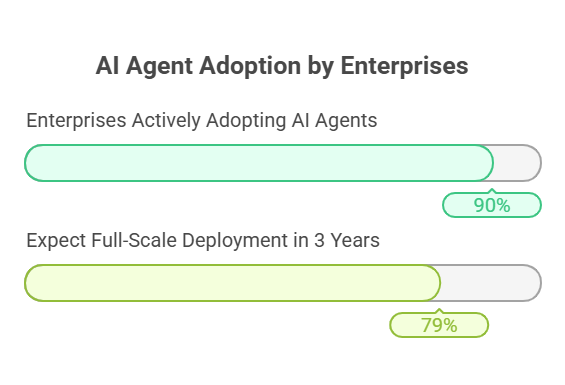
3. Real-World Examples of AI Coworkers in Action
Enterprise AI coworkers are no longer theoretical – they are already delivering results across industries in 2025. Here are a few examples illustrating how autonomous agents are working side by side with humans:
- Finance (Expense Auditing & Compliance): In July 2025, fintech firm Ramp launched an AI finance agent integrated into its spend management platform. This agent reads company expense policies and autonomously audits employee spending, flagging violations and even approving routine reimbursements without human review. Within weeks, thousands of businesses adopted the tool, drastically reducing manual auditing hours for finance teams. The agent improved compliance and sped up reimbursement cycles, and Ramp’s success in deploying it helped the company secure a $500M funding round. Other financial services firms are using AI agents for contract review and risk analysis – JPMorgan’s COiN AI, for example, can analyze legal documents in seconds, saving lawyers thousands of hours and catching risks humans might miss.
- Healthcare (Diagnostics & Administration): Hospitals are tapping AI coworkers to enhance care delivery and efficiency. Autonomous diagnostic agents can scan medical images or lab results with superhuman accuracy – one AI system now reads chest X-rays for tuberculosis with 98% accuracy, outperforming expert radiologists (and doing it in seconds vs. minutes). Meanwhile, administrative AI agents schedule appointments, manage billing, and handle insurance authorizations, cutting paperwork burdens. Studies show AI-driven automation could save the U.S. healthcare system up to $150 billion annually through operational efficiency and error reduction. Crucially, these agents are also programmed to follow privacy rules like HIPAA, automatically checking that data use or sharing is compliant and flagging any issues for review.
- Logistics & Retail (Supply Chain Optimization): Global retailers are deploying AI coworkers to streamline inventory and supply chains. Walmart, for instance, began scaling an internal “AI Super Agent” to manage inventory across its 4,700+ stores. The system ingests real-time sales data, web trends, even weather updates, and autonomously forecasts demand for each product by location, initiating restocking and reallocation of stock as needed. Unlike a traditional system that just suggests actions for planners, this agent actually executes the workflow – it detects a likely stockout, triggers a transfer or order, and adjusts stocking plans on the fly. In pilot regions, Walmart saw online sales jump 22% thanks to better product availability, along with significant reductions in out-of-stock incidents and excess inventory costs. Across manufacturing and logistics, AI agents are similarly optimizing operations – from predictive maintenance bots that schedule repairs before breakdowns (cutting unplanned downtime ~30%), to supply chain agents that dynamically reroute shipments when disruptions occur. These examples show AI coworkers tackling complex, dynamic problems that go well beyond the capabilities of static software.
- Customer Service & Sales: One of the most widespread uses of AI coworkers right now is in customer-facing roles. AI support agents can converse with customers, resolve common issues, and escalate only the trickiest cases to humans. Companies using AI “digital agents” in their contact centers report faster response times and higher first-call resolution. Replit’s support team, for example, noted that thanks to AI agents handling routine tickets, they would have needed 10x more human agents to support their customer base in earlier eras. Similarly, sales teams are employing AI SDR (sales development representative) agents that autonomously send outreach emails, qualify leads, and even schedule meetings. These agents work in the background to expand the sales pipeline while human reps focus on closing deals. The common theme: AI coworkers are taking over high-volume, repetitive tasks, allowing human workers to concentrate on complex, relationship-driven, or creative work.
4. Impact on Operations and the Workforce
For operations leaders, AI coworkers promise dramatic efficiency gains – but also require rethinking job design and workflows. On the upside, handing off “grunt work” to tireless AI agents can streamline operations and reduce costs. Routine processes that used to bog down staff (data entry, monitoring dashboards, generating reports) can be executed automatically. PwC reports that in finance departments adopting AI agents, teams have achieved up to 90% time savings in key processes, with 60% of staff time reallocated from manual tasks to higher-value analysis. For instance, in procure-to-pay operations, AI agents now handle invoice data extraction and cross-matching to POs, slashing cycle times by 80% and tightening audit trails at the same time. The result is a finance team that spends far less time on transaction processing and more on strategic activities like budgeting and decision support.

However, these efficiencies also mean workforce transformation. As AI coworkers handle more basic work, the human role shifts toward managing, refining, and collaborating with these agents. There is rising demand for “AI-savvy” professionals who can supervise AI outputs and provide the strategic judgment machines lack. Replit’s CEO observes that it’s now often more effective to hire a generalist with strong problem-solving and communication skills who can direct multiple AI agents, rather than a narrow specialist. In his words, “I’d rather hire one senior engineer that can spin up 10 agents at a time than four junior engineers”. This suggests entry-level roles (like junior coders, basic support reps, or data clerks) may diminish, while roles for experienced staff who can orchestrate AI and handle exceptions will grow. Indeed, some companies are already restructuring teams to pair human managers with a set of AI coworkers under their supervision – essentially hybrid teams where people handle the oversight, creative thinking, and complex exceptions, and agents handle the repetitive execution.
The workforce implications extend to training and culture as well. Employees will need to develop new skills in AI literacy – knowing how to work with AI outputs, validate them, and refine prompts or objectives for better results. The importance of soft skills is actually increasing: critical thinking, adaptability, communication, and ethical judgment become crucial when workers are responsible for guiding AI behavior. Forward-looking organizations are already investing in upskilling programs to ensure their talent can thrive in tandem with AI. There’s also a cultural shift in accepting AI “colleagues.” Change management is key to address employee concerns about job displacement and to create trust in AI systems. Many firms are emphasizing that AI coworkers augment rather than replace humans – for example, letting employees name their AI agents and “train” them as they would a new team member, to foster a sense of collaboration. In summary, operations will become hyper-efficient with AI agents, but success requires proactive workforce planning, new training, and thoughtful role redesign so that humans and AIs can work in concert.
5. Accelerating Digital Transformation with Autonomous Agents
The emergence of AI coworkers represents the next phase of digital transformation. For years, enterprises have digitized data and automated steps of their workflows through traditional software or RPA (robotic process automation). But those systems were limited to rule-based tasks. Autonomous AI agents take digital transformation to a new level – they can handle unstructured tasks, adapt to changes, and continuously improve through learning. Businesses that incorporate AI coworkers are effectively injecting intelligence into their processes, turning static procedures into dynamic, self-optimizing workflows. For example, instead of a fixed monthly process for reordering stock based on historical thresholds, a company can have an AI agent monitor all stores in real time and adjust restock orders hourly based on live sales trends, weather, even social media buzz about a product. This kind of responsiveness and granularity was impractical before; now it’s within reach and can dramatically improve performance metrics like inventory turns and service levels.
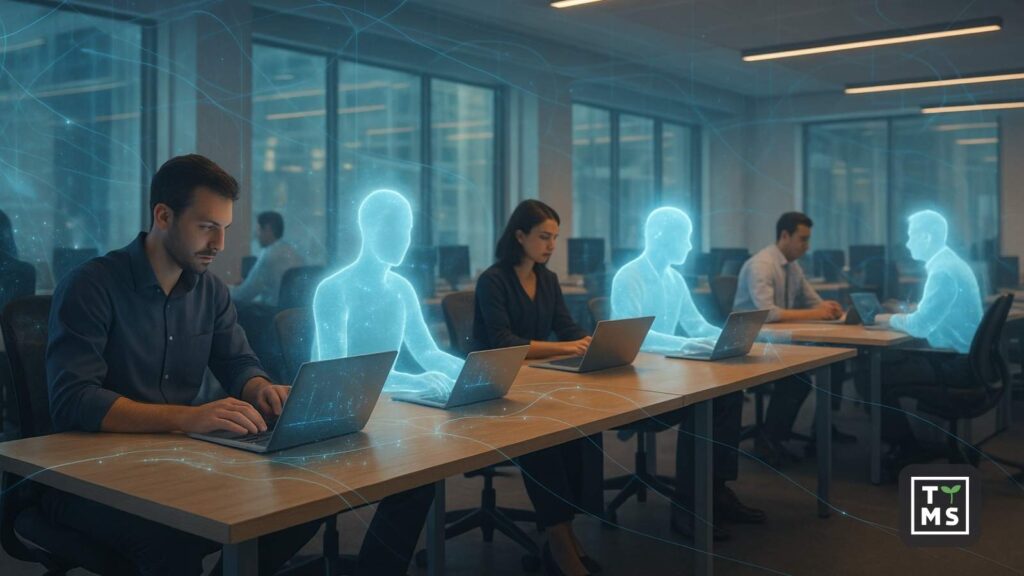
Digital transformation with AI agents is not a one-off project but a journey. Many enterprises are starting small – pilots or proofs-of-concept in a contained area – and then scaling up as they demonstrate value. Deloitte predicts that by the end of 2025, 25% of companies using generative AI will have launched pilot projects with autonomous agents, growing to 50% by 2027. This staged adoption is prudent because it allows organizations to build competency and governance around AI agents before they are pervasive. We see early wins in back-office functions (like finance, IT operations, customer support) where tasks are repetitive and data-rich. Over time, as confidence and capabilities grow, agent deployments expand into front-office and decision-support roles. Notably, tech giants and cloud providers are now offering “agentic AI” capabilities as part of their platforms, making it easier to plug advanced AI into business workflows. This means even companies that aren’t AI specialists can leverage ready-made AI coworkers within their CRM, ERP, or other enterprise systems.
The implication for digital strategy is that autonomous agents can be a force-multiplier for existing digital investments. If you’ve migrated to cloud, implemented data lakes, or deployed analytics tools, AI agents sit on top of these, taking action on insights in real time. They effectively close the loop between insight and execution. For example, an analytics dashboard might highlight a supply chain delay – but an AI agent could automatically reroute shipments or adjust orders in response, without waiting on a meeting of managers. Enterprises aiming to be truly “real-time” and data-driven will find AI coworkers indispensable. They enable a shift from automation being a collection of siloed tools to automation as an orchestrated, cognitive workforce. In essence, AI coworkers are the digital transformation payoff: the point where technology doesn’t just support the business, but becomes an autonomous actor within the business, driving continuous improvement.
6. Governance, Compliance and Trust: Managing AI Coworkers Safely
Deploying autonomous AI in an enterprise raises important compliance, ethics, and governance considerations. These AI coworkers may be machines, but ultimately the organization is accountable for their actions. Leaders must therefore establish robust guardrails to ensure AI agents operate transparently, safely, and in line with corporate values and regulations. This starts with clear ownership and oversight. Every AI agent or automation should have an accountable human “owner” – a person or team responsible for monitoring its behavior and outcomes. Much like you’d assign a manager to supervise a new employee, companies are creating “AI control towers” to track all deployed agents and assign each a steward. If an AI coworker handles customer refunds, for example, a manager should review any unusual large refunds it processes. Establishing this chain of accountability is crucial so that when an issue arises, it’s immediately clear who can intervene.
Auditability is another essential requirement. AI decisions should not happen in a black box with no record of how or why they were made. Companies are embedding logging and explanation features so that every action an agent takes is recorded and can be reviewed. For instance, if an AI sales agent autonomously adjusts prices or discounts, the system should log the rationale (the data inputs and rules that led to that decision). These logs create an audit trail that both internal auditors and regulators can examine. In highly regulated sectors like finance or healthcare, such auditability isn’t optional – it’s mandatory. Regulations are already evolving to address AI. In Europe, the upcoming EU AI Act will likely classify many autonomous business agents as “high-risk” systems, requiring transparency and human oversight. And under GDPR, if AI agents are processing personal data or making decisions that significantly affect individuals, companies must ensure compliance with data protection principles. GDPR demands a valid legal basis for data processing and says individuals have the right not to be subject to decisions based solely on automated processing if those decisions have significant effects. This means if you use an AI coworker, for example, to screen job candidates or approve loans, you may need to build in a human review step or get explicit consent, among other measures, to stay compliant. Additionally, GDPR’s data minimization and purpose limitation rules are tricky when AI agents learn and repurpose data in unexpected ways – firms must actively restrict AI from hoovering up more data than necessary and continuously monitor how data is used.
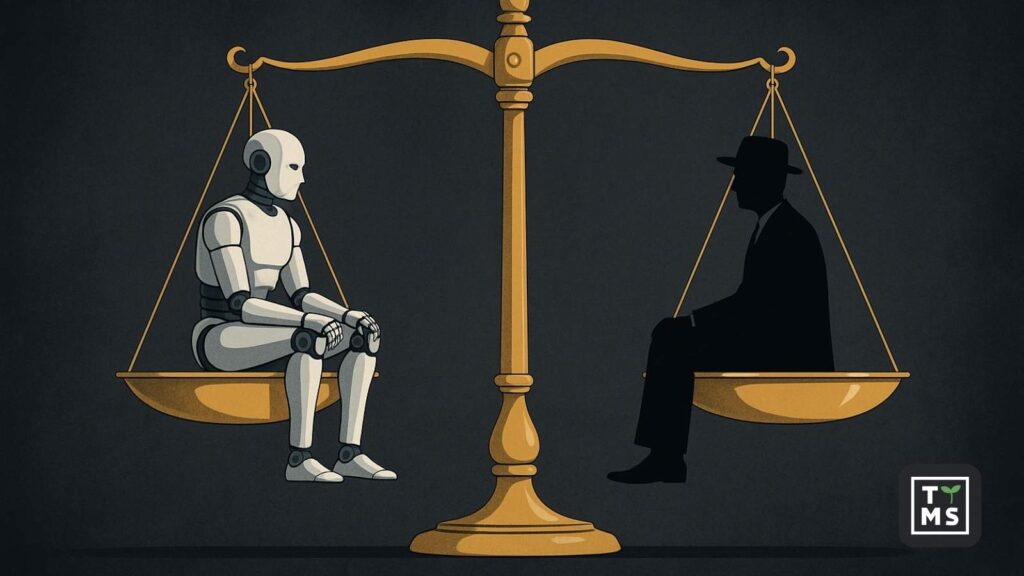
Security and ethical use also fall under AI governance. Autonomous agents increase the potential attack surface – if an attacker hijacks an AI agent, they could misuse its access to systems or data. Robust security controls (authentication, least-privilege access, input validation) need to be in place so that an AI coworker only does what it’s intended to do and nothing more. Businesses are even treating AI agents like employees in terms of IT security, giving them role-based access credentials and sandboxed environments to operate in. On the ethics side, companies must encode their values and policies into AI behavior. This can be as simple as setting hard rules (e.g., an AI content generator at a media company is permanently blocked from producing political endorsements to avoid bias) or as complex as conducting bias audits on AI decisions. In fact, several jurisdictions now require bias testing – New York City, for example, mandates audits of AI used in hiring for discriminatory impacts. Case law is developing, too: when a Workday recruiting AI was accused of disproportionately rejecting older and disabled candidates, a U.S. court allowed the discrimination lawsuit to proceed, underscoring that companies will be held responsible for AI fairness.
In practice, leading organizations are establishing Responsible AI frameworks to govern deployment of AI coworkers. Nearly 89% of enterprises report they have or are developing AI governance solutions as they scale up agent adoption. These frameworks typically include cross-functional AI councils or committees, risk assessment checklists, and continuous monitoring protocols. They also emphasize training employees on AI ethics and updating internal policies (for example, codes of conduct now explicitly address misuse of AI or data). It’s wise to start with a clear policy on where autonomous agents can or cannot be used, and a process for exception handling – if an AI agent encounters a scenario it’s not confident about, it should automatically hand off to a human. By designing systems with human-in-the-loop mechanisms, fail-safes, and clear escalation paths, enterprises can reap the benefits of AI coworkers while minimizing risks. The bottom line: trust is the currency of AI adoption. With strong governance and transparency, you can build trust among customers, regulators, and your own employees that these AI coworkers are performing reliably and ethically. This trust, in turn, will determine how far you can strategically push the envelope with autonomous AI in your organization.
7. Conclusion: Preparing Your Organization for AI Coworkers
The transition from AI copilots to AI coworkers is underway, and it carries profound implications for how enterprises operate and compete. Autonomous AI agents promise leaps in efficiency, scalability, and insight – from finance teams closing their books in a day instead of a week, to supply chains that adapt in real time, to customer service that feels personalized at scale. But realizing these gains requires more than just plugging in a new tool. It calls for reengineering processes, reskilling your workforce, and reinforcing governance. Enterprise leaders should approach AI coworkers as a strategic capability: identify high-impact use cases where autonomy can add value, invest in pilot projects to learn and iterate, and create a roadmap for broader rollout aligned with your business goals.
Crucially, balance ambition with accountability. Yes, empower AI to take on bigger roles, but also update your policies, controls, and oversight so that humans remain firmly in charge of the outcome. The most successful companies will be those that figure out this balance – leveraging AI autonomy for speed and innovation, while maintaining the guardrails that ensure responsibility and trust. Done right, introducing AI coworkers can become a flywheel for digital transformation: as AIs handle the busywork, humans can focus on creative strategies and relationships, which drives growth and further investment in AI capabilities.
For executives planning the next 3-5 years, the message is clear. The era of simply having AI assistants is giving way to an era of AI colleagues and “digital workers.” This evolution will shape competitive advantage in industry after industry. Now is the time to develop your enterprise playbook for autonomous agents – both to seize new opportunities and to navigate new risks. Those who act decisively will find that AI coworkers can elevate not only productivity, but also the strategic thinking of their organization. By freeing teams from drudgery and augmenting decision-making with AI insights, businesses can become more adaptive, innovative, and resilient. In a very real sense, the companies that succeed with AI coworkers will be those that learn to treat them not as just software, but as a new kind of workforce – one that works tirelessly alongside your human talent to drive enterprise performance to new heights.

Ready to explore how AI coworkers can transform your business? Discover how to implement autonomous AI solutions and get expert guidance on AI strategy at TTMS’s AI Solutions for Business. Equip your enterprise for the future of work with AI-enhanced operations and robust governance to match. Contact us!
FAQ
What is the difference between an AI copilot and an AI coworker?
An AI copilot is essentially an assistive AI tool – for example, a chatbot or AI assistant that helps a human accomplish a task (like suggesting code or drafting an email) but typically requires human prompting and oversight for each action. An AI coworker, on the other hand, is an autonomous AI agent that can handle entire tasks or workflows with minimal supervision. AI coworkers possess greater agency: they can make independent decisions, call on multiple tools or data sources, and determine when a job is complete before reporting back. In short, a copilot advises or assists you, whereas a coworker can take initiative and perform as a digital team member. This means AI coworkers can take on more complex, multi-step processes – acting more like a junior employee – rather than just offering one-off suggestions.
How are companies using AI coworkers in real life?
Enterprises across industries have started deploying AI coworkers in various roles. In finance, companies use autonomous AI agents for expense auditing, invoice processing, and even financial analysis. For instance, one fintech’s AI agent reads expense policies and flags or approves employee expenses automatically, saving thousands of hours of manual review. In customer service, AI agents handle routine inquiries on their own – answering customer questions or troubleshooting issues – which speeds up response times. Healthcare providers use AI agents to triage patients, schedule appointments, or analyze medical images (one AI agent can detect disease in X-rays with 98% accuracy, faster than human doctors). Logistics and manufacturing firms deploy AI coworkers to manage inventory and supply chains; for example, Walmart’s internal AI forecasts store-level product demand and initiates restocking autonomously, reducing stockouts and improving efficiency. These examples barely scratch the surface – AI coworkers are also appearing in sales (lead generation bots), IT operations (auto-resolving incidents), marketing (content generators), and more, wherever tasks can be automated and improved with AI’s pattern recognition and speed.
What benefits do autonomous AI agents bring to business operations?
AI coworkers can dramatically improve efficiency and productivity. They work 24/7 and can scale on-demand. This means processes handled by AI can often be done faster and at lower cost – for example, AI agents in finance can close the books or process invoices in a fraction of the time, with up to 90% time savings reported in some cases. They also reduce error rates by diligently following rules (no fatigue or oversight lapses). Another benefit is capacity expansion: an AI agent can handle a volume of routine work that might otherwise require many additional staff. This frees human employees to focus on higher-value activities like strategy, creativity, and relationship management. Additionally, AI agents can uncover data-driven insights in real time. Because they can integrate and analyze data from many sources faster, they may flag trends or anomalies (like a fraud risk or a supply chain delay) much sooner than traditional methods. Overall, businesses gain agility – AI coworkers enable more responsive operations that adjust instantly to new information. When properly deployed, they can also enhance service quality (e.g. providing quicker customer support) and even improve compliance (by consistently applying rules and keeping detailed logs). Of course, all these benefits depend on implementing AI agents thoughtfully with the right oversight.
What challenges or risks come with using AI coworkers?
Introducing autonomous AI agents isn’t without challenges. A primary concern is oversight and control: if an AI coworker operates independently, how do you ensure it’s making the right decisions and not “going rogue”? Without proper governance, there’s risk of errors or unintended actions – for instance, an agent might issue an incorrect refund or biased recommendation if not correctly configured and monitored. This ties into the need for auditability and transparency. AI decisions can be complex, so businesses must log agent actions and be able to explain or justify those decisions later. Compliance with regulations like GDPR is another challenge – autonomous agents that process personal data must adhere to privacy laws (e.g., ensuring there’s a lawful basis for data use and that individuals aren’t negatively affected by purely automated decisions without recourse). Security is a risk area too: AI agents may have access to sensitive systems, so if they are compromised or given malicious instructions, it could be damaging. There’s also the human factor – employees might resist or mistrust AI coworkers, especially if they fear job displacement or if the AI makes decisions that people don’t understand. Lastly, errors can scale quickly. A bug in an autonomous agent could potentially propagate across thousands of transactions before a human notices, whereas a human worker might catch a mistake in the moment. All these risks mean that companies must implement robust governance: limited scopes of authority for agents, thorough testing (including “red team” simulations to probe for weaknesses), human override capabilities, and ongoing monitoring to manage the AI coworker safely.
How do AI coworkers affect jobs and the workforce?
AI coworkers will certainly change the nature of many jobs, but it doesn’t have to be a zero-sum, humans-versus-machines outcome. In many cases, AI agents will take over the most repetitive, mundane parts of people’s work. This can be positive for employees, who can then spend more time on interesting, higher-level tasks that AI can’t do – like strategic planning, creative thinking, mentoring, or complex problem-solving. For example, instead of junior accountants spending late hours reconciling data, they might use an AI agent to do that and focus on analyzing the financial insights. That said, some roles that are essentially routine may be phased out. There may be fewer entry-level positions in areas like data processing, basic customer support, or simple coding, because AI can handle those at scale. At the same time, new roles are emerging – such as AI system trainers, AI ethicists, and managers who specialize in overseeing AI-driven operations. Skills in prompting, validating AI outputs, and maintaining AI systems will be in demand. The workforce as a whole may shift towards needing more multidisciplinary “generalists” who are comfortable working with AI tools. Companies have reported that proficiency with AI is becoming a differentiator in hiring; even new graduates who know how to leverage AI can stand out. In summary, AI coworkers will automate tasks, not entire jobs. Most jobs will be augmented – the human plus an AI teammate can accomplish far more together. But there will be a transition period. Enterprises should invest in retraining programs to help existing staff upskill for this AI-enhanced workplace. With the right approach, human workers can move up the value chain, supported by their AI counterparts, rather than being replaced outright.

